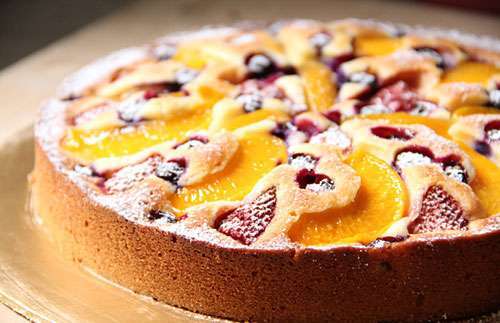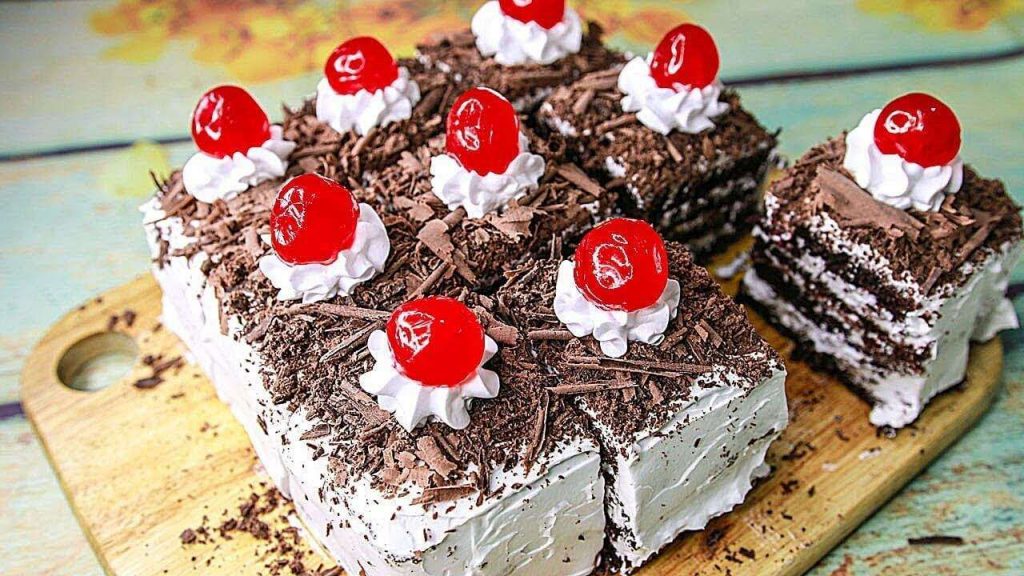As with many other people, I, too, once thought muffins were a type of pastry.
So if muffin a pastry? Frankly, I understand why anyone would consider muffin a pastry. It is easy to think so when the pastry chef often bakes muffins. Muffins sit side by side with pastries on dessert platters, and people call all baked goods pastry. But is muffin a pastry?
Muffins belong to a group of bread called quick bread; quick bread is leavened with baking powder or soda instead of yeast.
Here’s more information on muffins you probably never thought you’d need.
Is muffin a pastry?
Even though people think so, muffin is not a pastry.
Muffins are quick bread, leavened chemically with baking powder rather than yeast or sourdough.
How long do muffins last after the sell-by date?
Muffins can last for about six to seven days past their sell-by date.
What does pepperoni muffin mean?
Also known as pepperoni pizza muffins, pepperoni muffins are savory desserts filled with pepperoni and cheese. That’s why they are called pizza muffins.
Are cupcakes pastry?
Cupcakes are not pastry.
Cupcakes are miniature versions of cakes. A significant difference between cupcakes and pastry is the number of ingredients needed. You’d need more ingredients for cupcakes than you would pastry. With pastry, your recipe might be limited to water, wheat, and flour, while a cake recipe will need more ingredients such as vanilla extract, butter, milk, icing sugar, eggs, etc.
Is bread a pastry?
Bread isn’t pastry. Here are some things that make them differ:
- Pastry often has more fat content than bread.
- The higher fat content in pastry causes the pastry dough to produce less gluten, unlike in bread.
- This difference in fat content is also the reason for their different textures. Since pastry has more fat content and gluten, it has less elasticity. Hence their crumbly texture, while bread has a more elastic texture because its low-fat content causes it to be high in gluten.
- Bread flour is used for baking bread, while pastry flour is used for pastry.
- Pastry is made with less water to decrease gluten formation, unlike bread.
What are the different types of pastries?
Filo pastries
Also called phyllo pastry, this type of pastry dough is made with thin, unleavened dough with no rising agent. Filo pastry is commonly used in Turkish sweet pastry.
Hot water crust pastry
This unleavened pastry is perfect for savory pies like game pies and pork pies. Hot water crust pastry cooks twice during baking and doesn’t rise since it is unleavened.
Shortcrust pastry
If you ever bit into a chicken pie or an apple pie and wondered why the crust was so appealing, you have the shortcrust pastry to thank. Shortcrust pastry uses high-fat content and less water to reduce gluten formation so the crust can come out crumbly during baking.
Puff pastry
Puff pastry is delicious but is commonly considered difficult to make. Meat wrappings and pie crusts use this type of pastry. Making this unleavened dough involves alternating between dough and butter, putting the butter inside the dough, and repeatedly folding and rolling out the dough before baking.
Flaky pastry
Also called blitz or quick pastry. This light-layered pastry is commonly used in sausage rolls and pasties. Flaky pastry dough often contains low fat and fewer layers, hence its lightweight nature.
Choux pastry
Choux pastry is light, delicate, and delicious. It features essential ingredients like flour, butter, eggs, and water. Choux pastry has little fat content and no rising agent, unlike the puff pastry. It is employed in making light, brittle pies such as eclairs, profiteroles, choux puffs, cream puffs, crullers doughnuts, and beignets.
What are the different types of pastry cakes?
As we already established, cakes aren’t pastry. However, some cakes have pastry attached to their name, not because they are a pastry but because they are made in a pastry environment—some of these ‘pastry cakes’ include.
Eggless pineapple pastry cake
This dessert is soft and spongy with delicious layers filled with cream, cherries, and pineapples.
Red velvet pastry cake
This red-colored cake is often fluffy and filled with delicious cream.
Fresh fruit pastry cake

If you love fresh fruits and cake, you’d love fresh fruit pastry cake. This dessert features layers of sponge cake, fresh fruit, and cream.
Black forest pastry cake

Black forest pastry cake often features distinctive flavors from whipped cream, chocolate sponge cake, and cherries.
What are the differences between cake and pastry?
Ingredients
Cakes often feature more ingredients than pastries do. Pastries stick to fundamental ingredients like water, flour, and butter, but cake recipes often call for eggs, milk, sugar, flour, leavening agent, etc.
Production
Cakes are slightly more complicated to make than muffins. This is inescapable as cakes need more ingredients than muffins.
Flavors and decoration
Cakes are more decorated than pastry, from frostings to sprinkles. However, both are often available in a variety of flavors.
What are the differences between brownies and cakes?
Ingredients and flavoring
Cake and brownie recipes often call for essential ingredients like butter/oil, sugar, flour, and eggs. The only difference is that cakes require a leavening agent, baking powder or baking soda, and brownies do not.
Cakes allow a variety of flavorings, while brownies are restricted to the chocolate flavor.
Proportion
Cake recipes often require more flour content, while brownie recipes require more chocolate.
Texture
Cakes are light and fluffy, while brownies are denser and chewy. In addition, cakes have a creamy, smooth top instead of the shiny, cracked top of brownies.
Icing
Cakes often come with icing but can go without icing; while brownies don’t have icing, they can have melted chocolate sprinkled or drizzled at most.
What are the differences between muffins and cupcakes?
Ingredients
Cupcake recipes usually feature more sugar or sweetness than muffin recipes.
Production
Cupcakes and muffins often follow different baking methods. For example, butter and sugar are often mixed before other ingredients when making cupcakes, and a final batter is done. Meanwhile, dry and wet ingredients are mixed separately for muffins before combined.
Flavoring and decoration
Cupcakes generally have more creative and colorful decorations like sprinkles and frosting, while muffins do not. Also, muffins often have savory flavors, while cupcakes feature fruity or sweet flavors like vanilla or strawberry.
Texture
Cupcakes are soft and fluffy, while muffins have a rather crumby feel.
What are the differences between cakes and cupcakes?
Tools
Tools like the cake pans are always bigger for cakes, while cupcakes are baked in smaller tins.
Timing
Cupcakes often have less bake time than cakes.
Serving
A cupcake caters to only one person, while cakes can serve multiple people depending on the size.
What are the differences between bread and cake?
Ingredients
Cake recipes require more ingredients than bread recipes, resulting in high-calorie content
Cakes often have more sweet or sugary content and fat content than bread.
Even though both contain leavening agents, cakes are leavened chemically with baking soda or baking powder, while bread is leavened biologically with yeast.
Preparation
The creaming method is the most common in cake preparation, where butter and sugar are first thoroughly mixed. Next, egg and other liquid ingredients such as milk and vanilla essence are added. Next, dry ingredients such as flour, baking powder, and salt are mixed and added to the wet mixture, thoroughly mixed, and then baked.
Direct mixing of flour, sugar, salt, and yeast is employed for bread preparation. First, a hole is made in the center of the mixture. Next, warm water and oil are added and mixed well till the dough is formed. The dough is then kneaded well on a floured surface till it is very smooth. Afterward, the dough is left to rise for about 2 hours before baking.
Taste
Bread is often less sweet than cakes due to its low sugar content.
What are the differences between pastries and patisserie?
Pastries are a type of dough, and the desserts are made from such dough, while patisserie refers to French-baked goods and French-style bakeries where such baked goods are sold.
What are the differences between a baker and a pastry chef?
A pastry chef is an authority-based role; they prevail over dessert sections, ensure that the quality of items is up to standard, create tasty and appealing desserts, train subordinates, and curate unique menus for specific customers. Meanwhile, a baker is a more work-intensive role, usually under an employer, that involves making baked goods in bulk.
In essence, while a pastry chef manages several tasks almost simultaneously, a baker is to manage the bulk production of baked goods each day.




